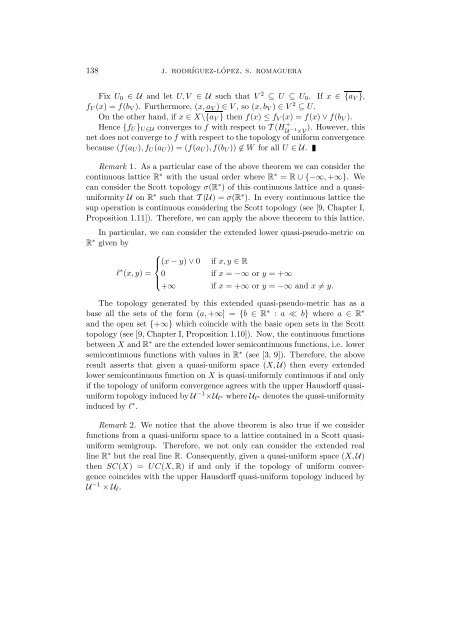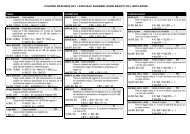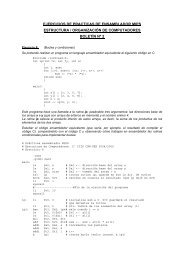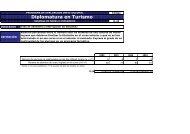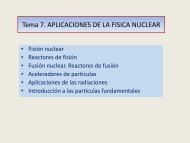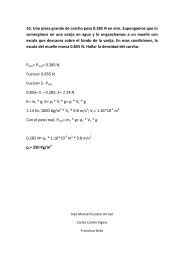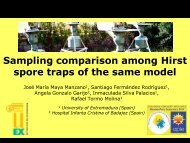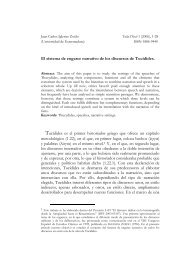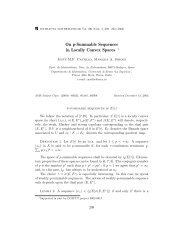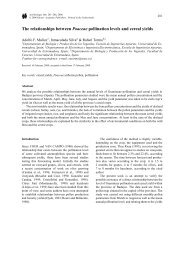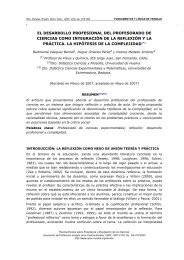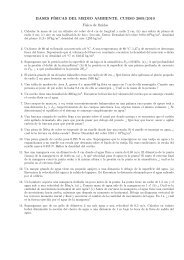Graph Topologies and Uniform Convergence in Quasi-Uniform ...
Graph Topologies and Uniform Convergence in Quasi-Uniform ...
Graph Topologies and Uniform Convergence in Quasi-Uniform ...
You also want an ePaper? Increase the reach of your titles
YUMPU automatically turns print PDFs into web optimized ePapers that Google loves.
138 j. rodríguez-lópez, s. romagueraFix U 0 ∈ U <strong>and</strong> let U, V ∈ U such that V 2 ⊆ U ⊆ U 0 . If x ∈ {a V },f V (x) = f(b V ). Furthermore, (x, a V ) ∈ V , so (x, b V ) ∈ V 2 ⊆ U.On the other h<strong>and</strong>, if x ∈ X\{a V } then f(x) ≤ f V (x) = f(x) ∨ f(b V ).Hence {f U } U∈U converges to f with respect to T (H + ). However, thisU −1 ×Vnet does not converge to f with respect to the topology of uniform convergencebecause (f(a U ), f U (a U )) = (f(a U ), f(b U )) ∉ W for all U ∈ U.Remark 1. As a particular case of the above theorem we can consider thecont<strong>in</strong>uous lattice R ∗ with the usual order where R ∗ = R ∪ {−∞, +∞}. Wecan consider the Scott topology σ(R ∗ ) of this cont<strong>in</strong>uous lattice <strong>and</strong> a quasiuniformityU on R ∗ such that T (U) = σ(R ∗ ). In every cont<strong>in</strong>uous lattice thesup operation is cont<strong>in</strong>uous consider<strong>in</strong>g the Scott topology (see [9, Chapter I,Proposition 1.11]). Therefore, we can apply the above theorem to this lattice.In particular, we can consider the extended lower quasi-pseudo-metric onR ∗ given by⎧⎪⎨ (x − y) ∨ 0 if x, y ∈ Rl ∗ (x, y) = 0 if x = −∞ or y = +∞⎪⎩+∞ if x = +∞ or y = −∞ <strong>and</strong> x ≠ y.The topology generated by this extended quasi-pseudo-metric has as abase all the sets of the form (a, +∞] = {b ∈ R ∗ : a ≪ b} where a ∈ R ∗<strong>and</strong> the open set {+∞} which co<strong>in</strong>cide with the basic open sets <strong>in</strong> the Scotttopology (see [9, Chapter I, Proposition 1.10]). Now, the cont<strong>in</strong>uous functionsbetween X <strong>and</strong> R ∗ are the extended lower semicont<strong>in</strong>uous functions, i.e. lowersemicont<strong>in</strong>uous functions with values <strong>in</strong> R ∗ (see [3, 9]). Therefore, the aboveresult asserts that given a quasi-uniform space (X, U) then every extendedlower semicont<strong>in</strong>uous function on X is quasi-uniformly cont<strong>in</strong>uous if <strong>and</strong> onlyif the topology of uniform convergence agrees with the upper Hausdorff quasiuniformtopology <strong>in</strong>duced by U −1 ×U l ∗ where U l ∗ denotes the quasi-uniformity<strong>in</strong>duced by l ∗ .Remark 2. We notice that the above theorem is also true if we considerfunctions from a quasi-uniform space to a lattice conta<strong>in</strong>ed <strong>in</strong> a Scott quasiuniformsemigroup. Therefore, we not only can consider the extended reall<strong>in</strong>e R ∗ but the real l<strong>in</strong>e R. Consequently, given a quasi-uniform space (X, U)then SC(X) = UC(X, R) if <strong>and</strong> only if the topology of uniform convergenceco<strong>in</strong>cides with the upper Hausdorff quasi-uniform topology <strong>in</strong>duced byU −1 × U l .


